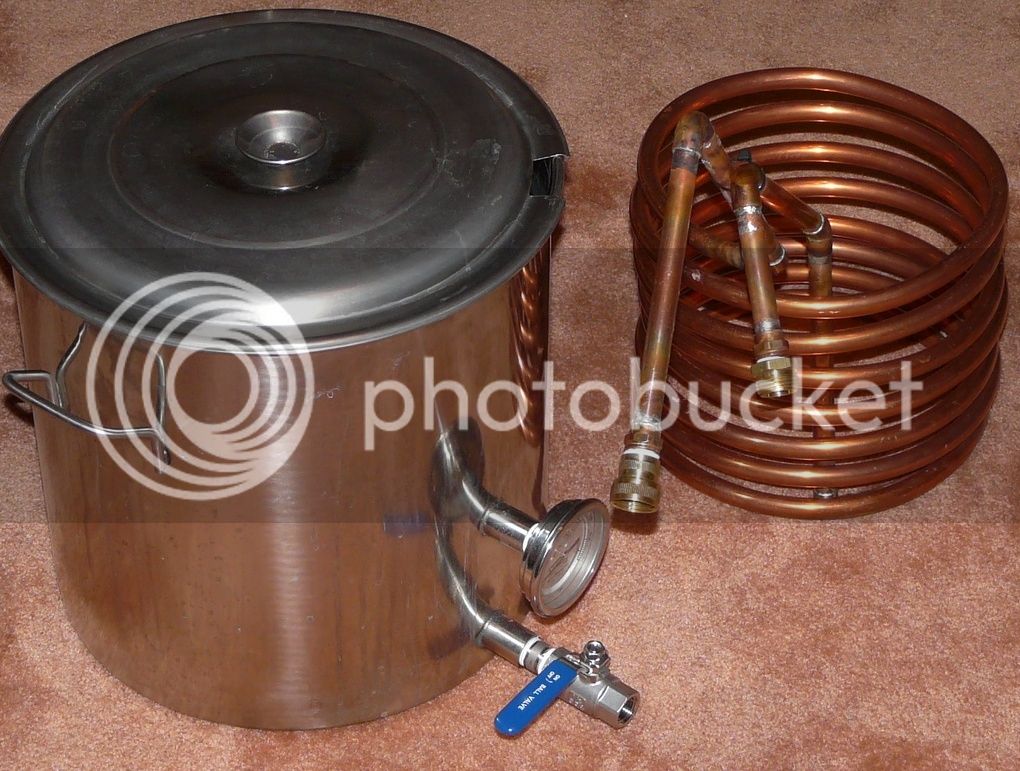BansheeRider
Well-Known Member
- Joined
- Dec 11, 2012
- Messages
- 1,505
- Reaction score
- 101
Hello brewers!!!
I just got a great deal on a used wort chiller that was originally purchased at my LHBS. It's 25' of 3/8 copper tubing. It looks clean, however looks aren't everything and I'm wondering what's the best method for cleaning a wort chiller is. Is there any special solutions that I should use, like vinegar, bleach, water???? Or should I just clean it with soap and water and sanitize before brew day? I also read that copper has a natural barrier between bacteria and the copper. Maybe I'm just being OCD.
Another question I had is about boiling the chiller. I know some people put it in the boil during the last 15 min. My issue is that I like to use late additions of extract during the last 15 min. Also sometimes the recipe calls for more hops during the last few minutes. How does this work when you have a huge piece of copper in your BK?
Cold break....this is the main reason I purchased this chiller. I wanted a better cold break so I can have clearer beer. So...after chilling do you let the wort settle in the kettle before dumping into the bucket? Do you leave the cold break material behind in the BK or will a paint strainer bag catch it? I do use the paint strainer bag but I'm not sure if it stops the cold break material. Also my bag always gets clogged during the pour because of hops and other crap. I do use whirlfloc in every batch.
Thanks and sorry for the newbie questions.
I just got a great deal on a used wort chiller that was originally purchased at my LHBS. It's 25' of 3/8 copper tubing. It looks clean, however looks aren't everything and I'm wondering what's the best method for cleaning a wort chiller is. Is there any special solutions that I should use, like vinegar, bleach, water???? Or should I just clean it with soap and water and sanitize before brew day? I also read that copper has a natural barrier between bacteria and the copper. Maybe I'm just being OCD.
Another question I had is about boiling the chiller. I know some people put it in the boil during the last 15 min. My issue is that I like to use late additions of extract during the last 15 min. Also sometimes the recipe calls for more hops during the last few minutes. How does this work when you have a huge piece of copper in your BK?
Cold break....this is the main reason I purchased this chiller. I wanted a better cold break so I can have clearer beer. So...after chilling do you let the wort settle in the kettle before dumping into the bucket? Do you leave the cold break material behind in the BK or will a paint strainer bag catch it? I do use the paint strainer bag but I'm not sure if it stops the cold break material. Also my bag always gets clogged during the pour because of hops and other crap. I do use whirlfloc in every batch.
Thanks and sorry for the newbie questions.



